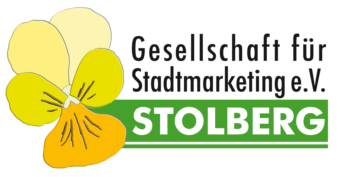Stolberg is a beautiful historical town in a magnificent natural setting. The welcoming old city centre is characterised by a towering medieval castle, surrounded by picturesque, cobbled streets with more than 750 monuments.* As part of the “Voreifel Nature Park”, Stolberg is surrounded by 37 nature reserves with hundreds of rare and – in some cases – unique animal and plant species. The city’s central location is within easy reach of Liège, Aachen and Maastricht.
Stolberg – first mentioned in a document in the early 12th century – was for centuries characterised by mining and processing of ore and coal, the beginnings of which go back to Celtic-Roman times. Its leading position in European brass production for centuries earned it the name “The City of Brass” (Kupferstadt). Across the town, you can discover no less than 18 city palaces built by the Copper Masters of the 17th and 18th centuries. Stolberg is still an important industrial city (with about 14,000 jobs in the sector), geared towards innovation and sustainability.
In the heart of Europe, Europe in the heart
Stolberg is by its very nature a European city located in the triangle between Germany, The Netherlands and Belgium and with historical trade relations with France, the United Kingdom and the rest of Europe. Since 2015, it is officially a “Europe-active municipality in North Rhine-Westphalia”. With two European schools, four European twin-town partnerships and an increasingly developing tourism sector, we are promoting European integration at the local level.
The flood
Stolberg was hit by a “flood of the century” in the summer of 2021. The climate change-related disaster wreaked havoc in the city centre and left many residents homeless literally overnight. The town is faced with the task of reinventing itself. This challenge is accepted. The aim is to develop the city step by step into a European model community in which climate protection, preservation of cultural heritage and socio-economic development are the guidelines in the spirit of the “New European Bauhaus” initiative of the European Union. The repeated funding of our projects by the “Ministry for Federal and European Affairs and International Affairs” encourages us in this.
Europa Nostra, the leading European cultural heritage organisation and the European Investment Bank Institute recognised Stolberg as one of the most threatened European cultural heritage sites.
*Stolberg is a member of the “Working Group on Historical City Centres of North Rhine-Westphalia.”
